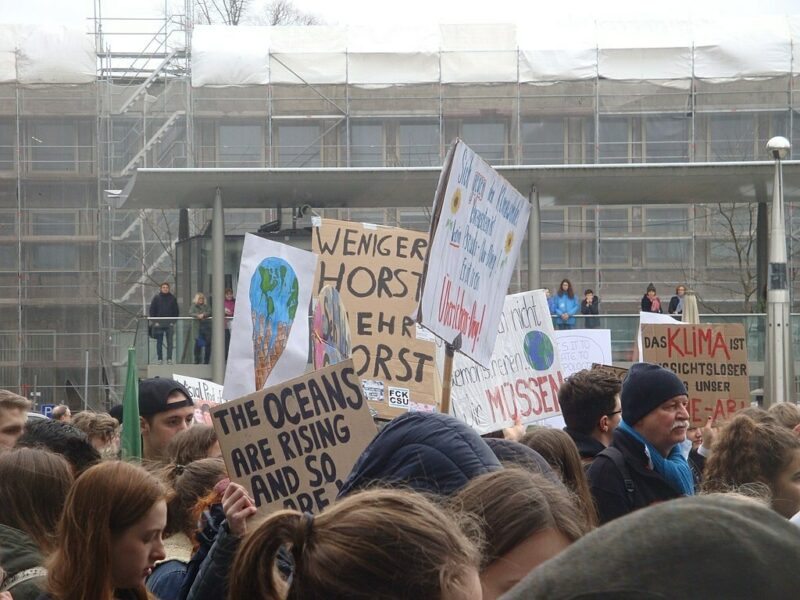Carbon tax in schools: a laboratory for change
Over two million school kids from 135 countries have participated in the climate strikes this year. The "Fridays for future" movement, initiated by climate activist Greta Thunberg, has boosted discussions on which policy tools can have a tangible effect in reducing greenhouse gas emissions. One of these tools is putting a price on carbon.
(Also available in German)
Share

This article is also available in German
In Germany, the school strike movement has issued specific demands: net zero emissions by 2035, 100% renewables by 2035 and coal phase-out by 2030 (eight years earlier than recommended by the government appointed Coal Commission). The students are also calling for a carbon tax on all greenhouse gas emissions and demand that the price reflects the costs that current and future generations will have to face if the world fails to curb global warming: 180€ for every tonne of CO2 emitted, a figure proposed by the German Environment Agency.
The contribution of schools to the climate problem is small compared to other sectors like energy, industry or transport; however, each positive action contributes to the total, and placing a carbon price in these institutions would provide a good learning exercise for students with potential to trigger broader changes.
The idea of a carbon tax has been around for decades and is based largely on the work of English economist Arthur Cecil Pigou, who in the 1920s advocated for a tax on negative externalities in order to avoid or reduce harmful impacts on society, such as pollution. The idea is that putting a price or a tax on carbon can serve as an incentive for emitters and consumers to turn away from burning fossil fuels. However, national governments have been slow to respond, including here in Germany, which is why it is all the more important that other actors – like cities, institutions or businesses – generate momentum for policies that could have a tangible impact in addressing global warming.
In principle, a carbon price can be implemented at different levels, which allows civil society actors to showcase that they are ready and to apply pressure on governments. Municipalities, businesses, private households or churches are well placed to experiment with carbon pricing and several already do. Another key benefit of carbon pricing is that it requires compiling data on all sources of emissions produced by an organisation, institution or building. This greatly increases transparency, revealing the leaders and the laggards, which provides an incentive to reduce emissions effectively. It is one key argument in favour of introducing universal carbon pricing.
Several universities in the United States already have carbon charge systems in place. For example, Yale University introduced a carbon fee on emissions from its buildings that is neutral to the revenue raised by the activities in the building. If an individual building produces fewer emissions than it has historically, it gets money back – if it does worse, it pays. The funds raised goes back to the buildings charged but the exercise has served to raise awareness of how carbon pricing works. The university is also seeking to incorporate the societal costs of climate change into its investment decisions and the exercise has prepared it in case a regional or national price on carbon comes into force.
As young people become more interested in carbon pricing, it makes sense to try to introduce these schemes where they spend most of their time – schools. The purpose of this exercise would be largely educational as the contribution of schools to the climate problem is mostly insignificant. It could serve as a laboratory for students to learn and engage with carbon pricing schemes and spur debate on efficient ways to reduce emissions. Even a carbon tax of 1€ per tonne would be of educational value for students, teachers and parents. A carbon tax in schools and other institutions should not be regarded as a replacement for a national or international carbon tax but rather as a stepping-stone and an educational tool.
In practice, establishing a carbon tax only takes four steps. The first and probably most difficult step is determining the current CO2 output. Secondly, a carbon reduction target must be set. This is followed by applying a price on carbon and calculating the annual carbon tax. The final step is taking a decision on how to invest the revenue. The tax is obviously most effective when the revenue is invested in low-carbon projects.
The Wilhelm-Schickard-School in Tübingen, Germany, has publicly disclosed its CO2 emissions. The school taught 1365 students (with 90 teachers) on 8226m2 of heated space and emitted 547.69 tonnes of CO2 in 2016. 75% of these emissions came from transport, of which 71% came from the commute. Let’s do the math: if a price of 180€ per tonne was implemented, the school would have to pay 98,584.3€ in tax that year. This equates to 8,215.35€ per month. However, when divided between the students and teachers, this would only amount to 5€ per month per person.
If a school were to introduce a carbon tax, there are many different ways it could reinvest the revenue to reduce its carbon footprint, including energy efficiency measures. Ideally, the projects would also address the main source of its emissions, in this case transport. There are several ways that this could be done. For example, a student ticket for the public transport system in Tübingen costs 30.60€ per month. The school could decide to support students and parents that currently drive to school by paying half of their public transport ticket, possibly leading many of these families to reconsider their means of transport. Another option could be facilitating car sharing among teachers, parents and students, for example by means of an app. This would reduce emissions extensively by greatly reducing the total number of car journeys to and from the school. If such an app proved successful, it could be expanded to other schools across Germany and around the world.
Make no mistake, pricing carbon emissions from schools will not be enough to limit warming to 1.5°C as outlined in the Paris Agreement. This requires far-reaching emission reductions in all sectors until we reach zero net emissions, and students who are out in the streets protesting are right to focus their energy on the big emitters. Nevertheless, a carbon tax in schools could serve as a useful educational and awareness raising tool for students, potentially triggering broader changes with tangible effects on carbon emissions inside and outside the school gates.












